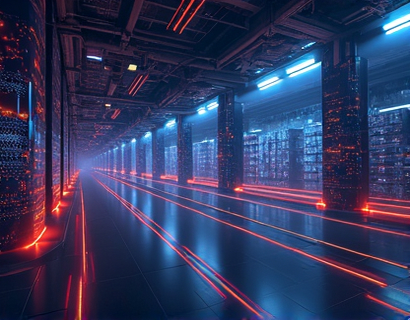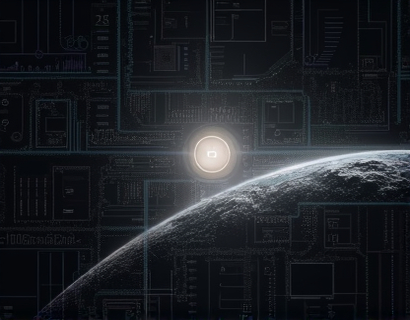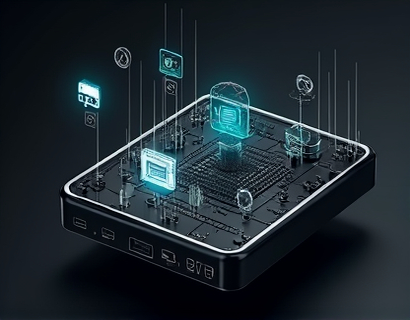AI-Driven Insights: Navigating the Robotaxi Industry with Safety and Education for All
The transportation landscape is undergoing a significant transformation, driven by advancements in artificial intelligence (AI) and shared mobility solutions. Among these innovations, the robotaxi industry stands out as a revolutionary approach to urban transportation. This article explores the role of AI in shaping the future of robotaxis, emphasizing the importance of safety and education for diverse audiences, including tech enthusiasts, parents, educators, and students.
Understanding Robotaxis
Robotaxis are autonomous vehicles designed to transport passengers without the need for a human driver. These vehicles utilize a combination of sensors, cameras, and AI algorithms to navigate roads, recognize obstacles, and make real-time decisions. The emergence of robotaxis promises to enhance urban mobility, reduce traffic congestion, and lower transportation costs.
The Role of AI in Robotaxi Services
AI plays a crucial role in the operation of robotaxis. It enables vehicles to process vast amounts of data from their surroundings, allowing them to make informed decisions. Key AI technologies used in robotaxi systems include:
- Machine Learning: Algorithms that improve over time by learning from data, enhancing the vehicle's ability to navigate complex environments.
- Computer Vision: Technology that allows vehicles to interpret visual information from their surroundings, crucial for identifying pedestrians, traffic signals, and other vehicles.
- Natural Language Processing: Enables passengers to interact with the robotaxi through voice commands, making the experience more user-friendly.
Safety First: Ensuring a Secure Experience
Safety is paramount in the robotaxi industry. As these vehicles operate without human drivers, ensuring the safety of passengers, pedestrians, and other road users is critical. AI contributes to safety in several ways:
- Real-Time Monitoring: AI systems continuously monitor the vehicle's environment, allowing for immediate responses to potential hazards.
- Predictive Analytics: By analyzing historical data, AI can predict potential accidents and adjust driving behavior accordingly.
- Emergency Protocols: In the event of a malfunction or unexpected situation, AI can execute predefined safety protocols to protect passengers.
Education and Awareness: A Resource for All
As the robotaxi industry evolves, it is essential to educate various audiences about its implications. An AI-powered chat interface can serve as a valuable resource, providing verified insights and fostering understanding among different groups:
For Tech-Savvy Individuals
Tech enthusiasts are often eager to learn about the latest advancements in AI and transportation. An AI chat interface can offer in-depth information about the technology behind robotaxis, including the algorithms used, the challenges faced in development, and the future potential of autonomous vehicles.
For Parents
Parents are naturally concerned about the safety of their children when it comes to new technologies. An educational platform can provide parents with information on how robotaxis operate, the safety measures in place, and the benefits of using autonomous vehicles for family transportation. This knowledge can help alleviate concerns and foster acceptance of new mobility solutions.
For Educators
Educators play a vital role in shaping the understanding of technology among students. By utilizing an AI chat interface, teachers can access resources that explain the principles of AI, robotics, and transportation. This information can be integrated into lesson plans, encouraging students to explore the intersection of technology and society.
For Students
Students are the future of innovation, and providing them with access to accurate information about robotaxis can inspire interest in STEM (science, technology, engineering, and mathematics) fields. A child-friendly version of the AI chat interface can present complex concepts in an engaging and understandable manner, making learning about autonomous vehicles fun and accessible.
Exploring the Future of Transportation
The future of transportation is closely tied to the development of robotaxis and other autonomous vehicles. As cities become more congested and the demand for efficient transportation solutions increases, robotaxis offer a promising alternative. The integration of AI in these vehicles not only enhances their functionality but also contributes to a more sustainable urban environment.
Environmental Impact
Robotaxis have the potential to reduce the carbon footprint of urban transportation. By optimizing routes and minimizing idle time, these vehicles can decrease fuel consumption and emissions. Additionally, many robotaxi services are exploring electric vehicle options, further contributing to environmental sustainability.
Integration with Public Transportation
Robotaxis can complement existing public transportation systems, providing first-mile and last-mile solutions that enhance overall mobility. By integrating robotaxis with buses, trains, and other forms of transport, cities can create a seamless travel experience for residents and visitors alike.
Challenges and Considerations
While the potential of robotaxis is immense, several challenges must be addressed to ensure their successful implementation:
- Regulatory Framework: Governments need to establish clear regulations governing the operation of autonomous vehicles to ensure safety and public acceptance.
- Public Perception: Building trust in robotaxi services is essential. Public education campaigns can help inform citizens about the benefits and safety measures associated with autonomous vehicles.
- Technological Limitations: While AI has made significant strides, challenges such as adverse weather conditions and complex urban environments still pose obstacles to widespread adoption.
The Importance of Verified Information
In an era of information overload, ensuring the accuracy of content related to robotaxis is crucial. An AI chat interface can provide users with verified insights, helping to dispel myths and misconceptions surrounding autonomous vehicles. By offering reliable information, the platform can foster informed discussions and promote a better understanding of the technology.
Conclusion
The robotaxi industry represents a significant leap forward in the evolution of transportation. By harnessing the power of AI, these autonomous vehicles promise to enhance mobility, improve safety, and contribute to a more sustainable future. As we navigate this exciting landscape, it is essential to prioritize education and safety for all audiences. An AI-powered chat interface serves as a vital resource, providing verified insights and fostering understanding among tech enthusiasts, parents, educators, and students. Together, we can embrace the future of transportation and the pivotal role of AI in shaping a safer, more knowledgeable industry.











































